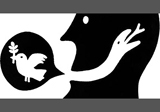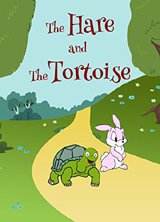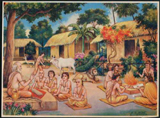Evolution
Evolution Next XV
Abstract
Humanity today is undergoing a massive shift leading to much confusion. The old values are fast disappearing and the new are yet not in sight. This needs a rethinking in our approach towards children and adolescents who are caught up between two worlds.
Introduction
There are a number of challenges that the present generation faces today. The traditional past on which humanity had a foothold for its actions has been nearly taken away. Some are still holding on to its corners like a tattered garment that is going to give way soon. On the other hand a number of complex world-forces have entered the vacuum creating confusion everywhere. But this confusion itself is being used for the evolutionary leap. It is working to till the soil deeper and deeper so that the seeds of a New Creation may sprout upon it.
This makes the role of the educator very challenging. There are some who lament the situation and are trying to somehow force things back to the past, but that is simply not working. Others have some inkling towards the Future but are confused when they see the present appearances and know not how to handle it. Few are those who, like the ways of Divine Wisdom, are using this very confusion and the forces at play to help children move towards the Future and which is the only right way. Not scared of the forces at play, not afraid of the future but having full trust in the Divine and His ways we need to study deeply these forces that act upon the world and see how the Divine Wisdom is using them for His mysterious purposes. To align with the Divine vision and ways of dealing with the challenges of creation is what is needed. But this is a most difficult task. It is easier to have some fixed ideas, easy also to read on these subjects and apply them. But the problem with such applications after just reading them is that we tend to turn them into fixed dogmas and thereby mix these truths with a generous dose of falsehood added from our own fixed opinions and views that interfere with the true understanding. The Divine works with suppleness and wideness and even certain flexibility in His approach, that defies the ways of the human mind. It is this suppleness and wideness that is the need of the hour, and an inner quietude attentive to the Divine Guidance within.
What can therefore be presented are only tentative possibilities, possible ways of dealing with children as they grow through adolescence. But each child is unique and one has to feel for the deeper truth of the child. The uniform and standardised way of dealing with each child as a similar unit is redundant. Each child is in fact unique and it is as important to preserve and even foster this uniqueness as it is to help the child grow into certain universal values. In fact each universal value itself will adapt differently in each child. For someone courage may mean facing a difficult external situation, for another it may mean acknowledging a mistake, for yet another conquering some habit and so on and so forth. These universal values are in everyone and it is helpful to appeal to them in our discussions with growing children. That is of course, provided we ourselves are practising the values we wish to see in the child. That is a big ‘if’ indeed since all our words will fall flat and only create disrespect in the child if we do not practice what we preach. Children and adolescents see through us much more easily than adults do. They are still not conditioned to the ways of the world that encourage hypocrisy and duplicity.
Universal values
One of the things that is happening as a result of the confusion is misunderstanding between the generations. This itself is not uncommon and almost every generation in history has faced it. The difference however is the rather big gap that has taken place. It is no more a question of the younger generation challenging and dropping a few values of the past or adopting a few others while keeping some of the core issues intact. It is as if the very core has been shaken. It is not just the way of dressing or the outer behaviours that have changed; it is the way of thinking and feeling and looking at life and relating with it that has changed or is changing fast. This is the challenge. But as if inadvertently adding to the confusion, the past generation is either completely discarding the new, often making little or no attempt in trying to understand what is happening in them. This is only widening the gap leading to more problems rather than finding a way to resolve them. Half the problem is solved when we look at it rightly and understand it. However we are rushing to solve it without even trying to understand it! Secondly, what makes things worse is that we focus on how to get rid of the negatives rather than inculcating the positives. Of course, granting that our understanding and evaluation of the ‘positive and negative’ are right. In nature we see the two are so beautifully interwoven with each other with a deep purpose, when we see the larger picture. But we have the immediate concerns of a ‘limited being’ and know neither his unique past nor the far-off future and start setting right what Nature or God has willed. After all, what do we really know?
Besides there are many things that we term as negative but which may actually be the reverse side of a good and positive quality. For example stubbornness, tendency to revolt against authority, going against the grain of social and other norms, challenging external authority figures such as parents, religious priests, etc. may all be wonderful things in the making. Rightly oriented, they may be the making of a great reformer or a discoverer. So too many things that we take to be positive such as obedience to elders, doing everything as told, following the social and religious norms, etc. may well indicate an inability to stand up for what is True and Beautiful, a mass mind, an inability to handle dissent. In reality, both these types, the conformist and the non-conformist, the introvert and the extrovert have each their strong and weak sides. All that they need is a right orientation and not a negation of who they are and what qualities they embody. It is like a plant or tree. Each has its place and way of progressing towards its unique blossoming. What we need is to provide the right conditions for growth which will be different for different species of plants. But if we try to change a rose into a mango or a wild shrub into a creeper, an oak into grass and vice versa, then we disturb the balance and the evolutionary curve of things. The grass can never become an oak and lose its own svadhārma of grass-hood. But this is what we are taught through the famous story of the hare and the tortoise that the two should compete in the race and whoever wins is better. In reality, in nature a tortoise is best by the side of the river and a hare on land. Each has its place, its uniqueness, its role and function in the larger economy of things. There is no competition in nature. Even what we see as competition is not about who is better but simply a way that nature uses to develop both.
A Unique expression
In other words each human being is a unique expression of some aspect of the Divine. Life experiences as well as educators have this challenging task of helping to bring out this unique divine aspect, of chipping off the crusts around it, of refining it and shaping it as a sculptor shapes the forms and figures out of mud and stone. Potentially the mud or stone can be moulded into any shape the sculptor wants.The form and figure are however an icon of the idea that it represents. Therefore the human sculptor or the educator has to feel the Divine Idea within the raw material and give it expression in tune with the Divine Will in the child. Given the enormous difficulty of this task, it may be wisely said that often it may be best not to interfere with the child’s natural development unless one has the Wisdom and is attuned to the Divine Wisdom and Idea, of which the child is a representative. But being human we not only feel it necessary to intervene and interfere in others’ affairs but being presently at the apex of creation feel we are wise enough. Unfortunately our being wise enough is to a Higher Intelligence not so wise enough! Therefore it is so important to keep growing in Wisdom even after we have gathered all the necessary information and gleaned it into stacks of knowledge. What we forget is that we too as individuals represent one of the infinite aspects of the Divine and hence, even at our best, our vision is limited to the aspect we have developed within us. This is only if we have taken care to bring out the divinity within us and have succeeded in the process. More commonly though we are far from that and only end up imposing upon the child our own ignorant understanding of life or see our ego cloned in the child or at best stereotype and standardise into a fixed form of perfection (by our mental standards of course) what is meant to be the free growth of a living, conscious individual.
The question therefore arises, — what then is our role, if any? Yes, we all do have a role, even an important role to play. It does not lie in giving lectures or telling stories to the children though these things no doubt have their value. It is also not about reading books on parenting or education, gathering tons of information, strategies and techniques. These too have their place but this is not the crucial thing. The real thing, as with rearing a plant, is to provide the right kind of atmosphere needed for the child’s soul to blossom. This may seem to be the easiest but in reality is perhaps the most difficult task. An atmosphere is not something we can do mentally or by any artificial means. It is the state of consciousness that we carry around us. It is what we as human beings breathe psychologically, so to say. It is the subtle and occult influence human beings cast upon everything around them. The seed of the Divine is already there in the child. The physical and psychological soil is already provided by the parents. What is needed now for the children to blossom is the right atmosphere; say for example, an atmosphere of love and joy, a breath of harmony and peace upon their lives, a luminous strength that inspires and the freedom to learn and grow in their own unique way. If we can provide that much of the task is done. The seed is bound to blossom provided of course the soil, that is parental and antenatal influences, have not been a disaster. All things upon earth take shape in matter which is still so badly tied to heredity and influences in the womb that it has a strong influence on the child. But of that we can speak later. When we provide the right atmosphere, the divine quality embedded within the child spontaneously begins to blossom. Nothing artificial is needed from outside.
Creating the right atmosphere
Though this seems so simple, it is not an easy task to create the right atmosphere and the right environment for the blossoming of a child. Apart from the subconscious influences that parents bring, there is unfortunately too much tendency in human beings to quarrel, often over petty issues or even no issue. Anger and lust and greed are still the major food for large sections of humanity. Most of us lead our lives quite unconsciously and our speech and actions are impelled by dark forces that have a disastrous influence upon the child who is open to everything. Even those who are somewhat serious about the child’s development and growth easily err on two extremes. Either they become too lax and indulgent like the modern parent, thinking it to be a sign of superiority, often catering to every small need for comfort; or else, they become overly strict like our immediate generation that wants to control and restrict every movement and choice of the child.
A balanced outlook towards life that neither fears contamination with everything, seeing all contacts and activities with suspicion nor gives in to each and every demand mistaking it for love, is a most difficult thing. At the same time it is not easy, given the deep emotional attachment that every parent is programmed to have towards the child. This attachment in itself is not so harmful; it is even needed during the early phases of the child’s growth until he grows into an adult, but when it is mixed with ambition and possessiveness then it is harmful. The child is not the property of parents or teachers or even of a group, the State or nation. On the contrary, he is the hope for the future of humanity. And the future will work itself through him if we allow it to unfold in its own way. Children are instinctively turned towards the future and have a feel for it. But they need freedom to explore the future that often discloses itself through experimentation and even error. What is error but an approximation, a failed attempt, a misdirected effort. Give it a direction and the freedom and the right environment and the same thing will become a means to bring out some hidden truth. But this is difficult to do with parents around since instinctively parents are bound by their past. It is challenging for children to navigate between the past that the parents, barring a few exceptions, represent and the future that is trying to be born within them.
That is why it is better to sometimes separate the child from the parent during the years of education, say for around 5 years and let him stay at some place of learning with a wise teacher as its head. This was the rationale behind the gurukula system of old. However, it has now lost its relevance due to the lack of such gurus and also because the commercial element has become so powerful in education. In the days when the gurukula system was at its peak, the guru did not charge money for the education he provided, since education can never be priced. It is a priceless gift and no cost would be sufficient if one took it that way. However the gurus were supported by benefactors and the king and the disciple himself had to pay the gurudakṣiṇā to complete the education. The gurudakṣiṇā was another way of granting the degree so to say. It was like a test that included life itself and how the student fared reflected how much he had absorbed the teachings. In other words it was an education closely connected with and knit into life. It is quite possible that the truth of this ancient system will be recovered, albeit in a new form. When we have such wise Masters, then parents will be rather happy and feel secure in leaving their children with them. That is what gurukula means. Once admitted, the child belongs to the family of the guru. He is a member of his household and not merely a pupil, least of all an object to be standardised and fitted into the existing social and cultural mould for a fee. When this happens then education will once again become a thing connected with life. Class rooms will be replaced by a universal learning through each and every experience and contact of the child as he grows through the years. There is a wisdom working in everything and it is this that the student needs to explore and come in contact with. If he can learn to do so as a living reality or as a way of life then we need not worry about things such as career, etc. He is sufficiently equipped to find his way and his place in the universe.
Dr. Alok Pandey, an editor of NAMAH and member of SAIIIHR, is a doctor practising at the Sri Aurobindo Ashram.
Share with us (Comments,contributions,opinions)
When reproducing this feature, please credit NAMAH,and give the byline. Please send us cuttings.







